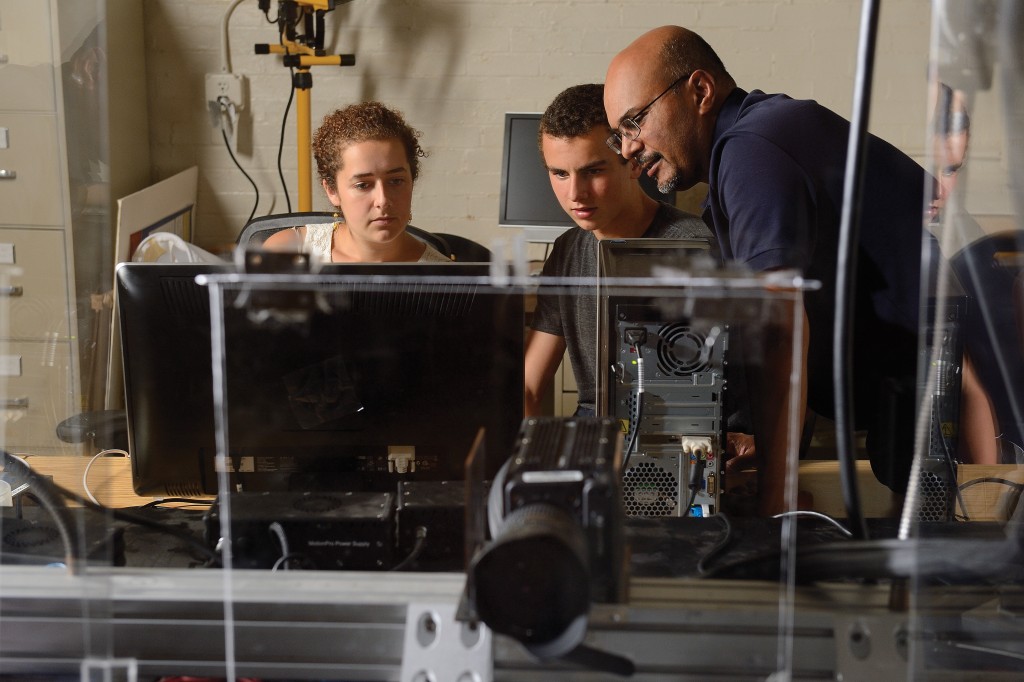 To most people, spider crickets are pesky insects that leap crazily out of dark corners in basements and garages, making the heart race with surprise.
To most people, spider crickets are pesky insects that leap crazily out of dark corners in basements and garages, making the heart race with surprise.
To Emily Palmer (above left), the tiny creatures with bodies that curve like an archer’s bow and limbs as long and delicate as a prima ballerina’s are minuscule marvels of engineering.
“Spider crickets are really amazing: They can jump up to 60 times their body length, maintain a stable posture while in the air, and almost always land on their feet,” explains Palmer. “The question is: How do they do it?”
Palmer, a sophomore mechanical engineering major, and her mentor, Rajat Mittal, a professor in the Department of Mechanical Engineering, are determined to find out.
Using a collection of crickets, a Plexiglas jump “arena,” three high-speed video cameras, and computer programs, they’re taking on the complex task of analyzing the insects’ jumps, frame by frame.
“We put a cricket into the box and then nudge it to make jump, and then we capture those jumps at about 500 or 600 frames per second with the cameras,” explains Palmer.
MATLAB, a computing language used by engineers, helps them calibrate the images, and then track the cricket’s motion, from the location of its head and tail to angles during takeoff, landing, and in the air. Palmer is also writing a program to calculate velocity, drag, torque, and more.
According to Mittal, principles learned from this study could be used to design and build small jumping robots capable of traversing complex terrains. “Jumping is potentially a more efficient mode of travel than aerial or terrestrial locomotion in difficult environments,” says Mittal. “They were always jumping out at me unexpectedly, and I found myself marveling at their ability.”
Along with Palmer, high school student Nicolas Deshler; David Gorman, a senior mechanical engineering student; and Catarina Neves, an exchange student from Brazil, participated in the study.




